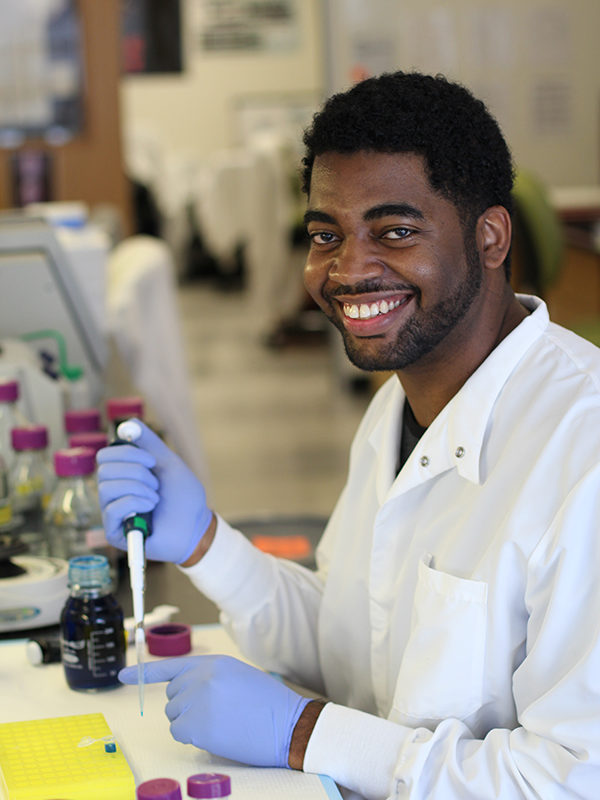
A little over a year after arriving at USC, D’Juan Farmer has been awarded one of the most prestigious fellowships available to postdoctoral fellows. The Howard Hughes Medical Institute (HHMI) Hanna H. Gray Fellows Program supports early-career life scientists from groups underrepresented in the life sciences. The fellows receive up to $1.4 million in funding for eight years—supporting the transition from their early postdoctoral training to their early faculty careers.
Tell me about your fellowship project.
I use zebrafish to understand skeletal stem cells. And specifically, I use a model of disease called craniosynostosis to understand how the bones that form our skull develop, but also how during disease, they become dysfunctional and fuse prematurely.
What is craniosynostosis?
Babies usually have these soft spots, and the skull isn’t fully formed because it needs to accommodate the ongoing growth of the brain. And so for that reason, there are these physical structures, known as sutures that will separate the bones of your skull. As a result, your brain can keep growing and growing, and it won’t be inhibited by the fusion of your bones. In craniosynostosis, these bones will prematurely fuse together, and the brain will continue to grow, and you have all these different malformations of the skull shape. The most dangerous aspect of the disease is the negative impact impaired skull growth can have on brain development when left untreated.
What is the goal of your research?
The clinical application is how to best treat patients with craniosynostosis. And we think that the way to best treat that is by understanding the stem cell populations that grow the skull bones. When we best understand these cells, we can then begin to ask how we can modulate their behavior to keep sutures at the right place at the right time. At a broader level, we want to understand how a stem cell population changes over time, and what are the distinct needs of a stem cell as an organ develops and matures.
What inspired you to become a stem cell researcher?
I always had an affinity for science and particularly biology from a young age. That was probably reflected in my interest in insects or chemicals and things you shouldn’t be doing sometimes as a child. I also became interested in disease early on as my family members began to be diagnosed with a spectrum of different diseases. I found myself at a young age questioning the why and the how. And then I had really good science teachers that helped mentor me. So that began to shape the early version of why I got into science. And I certainly was always interested in development, and what has emerged is that development and stem cells go hand in hand.
What attracts you to a career in academia?
You can be your most creative self and your most ambitious and discovery-oriented self in an academic setting, and that’s where I want to be. I want to be able to discover things and go different places that I didn’t expect to go and learn really exciting new things about biology. And academia is the place to do it. In addition, I am drawn by the prospect of being a mentor to budding scientist as well as being a part of education. I certainly have a strong interest in education policy and making sure that people have access to quality education. In college, I saw professors act as both mentors and advocates, and I believe that these features complement academic research and makes someone a great scientist. And so that’s part of what I’m hoping to achieve in the future.
How does the Hanna H. Gray Fellows Program support diversity in the sciences, and how has this fellowship made an impact in your own career?
The program was created to promote the retention of diverse and underrepresented scientists in biomedical research. It’s a wonderful investment from HHMI, and I am honored to be a part of this mission. Unlike any other fellowship or program before, this program commits to seeing early career scientists like myself succeed by investing in our careers not only as postdoctoral fellows, but also as early independent investigators. Such a powerful commitment emphasizes that diversity in the sciences is a priority, because it promotes uniquely beneficial contributions to biomedical research. The finalists and recipients of this award are among the top trainees in their respective fields, and the infusion of their talents with their diverse backgrounds only make their future careers more interesting and exciting. Personally, I am excited to see how such an early investment enables me to focus on my science and my career. It certainly makes me want to work harder to achieve at a level I know is possible.
